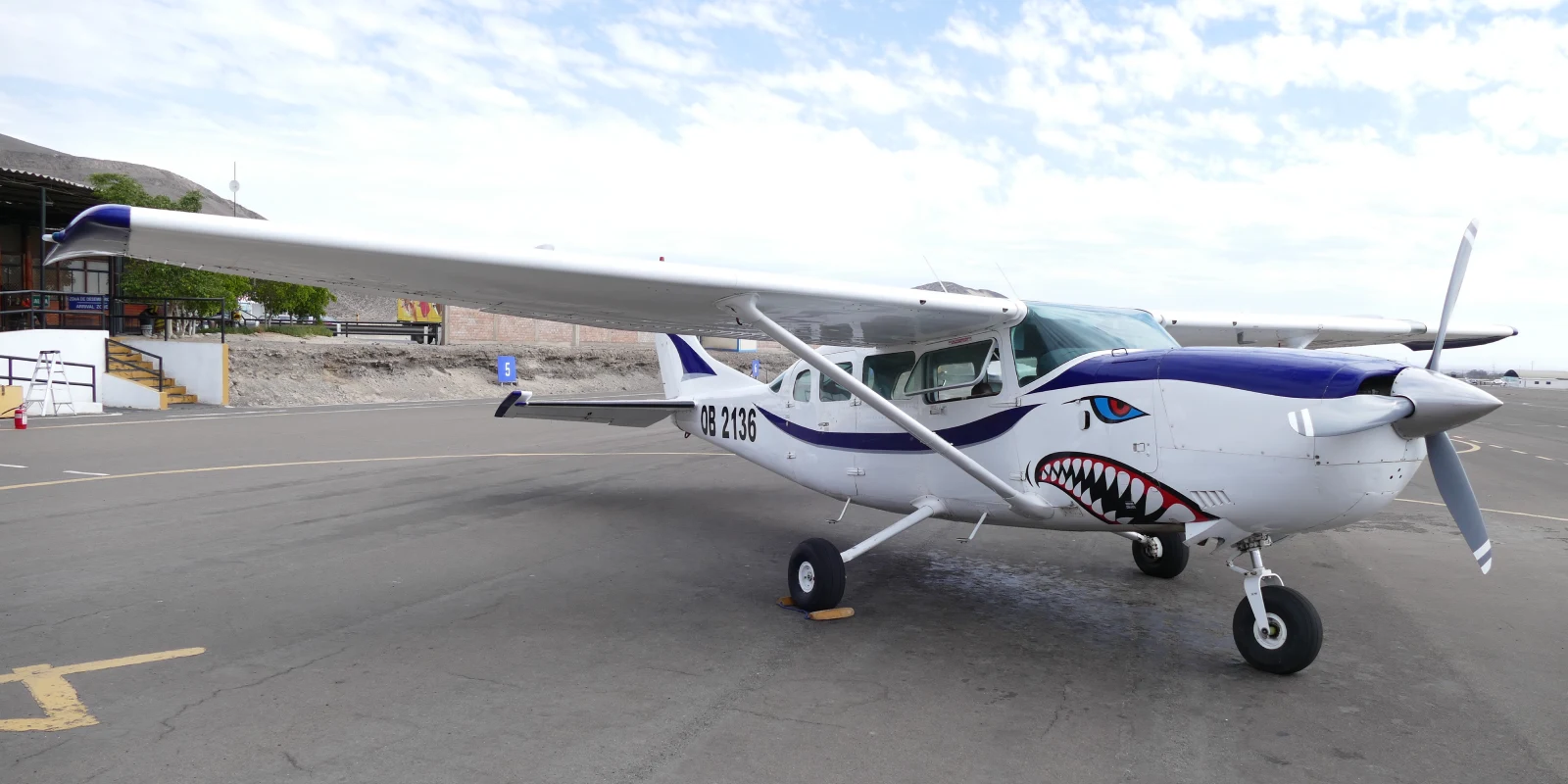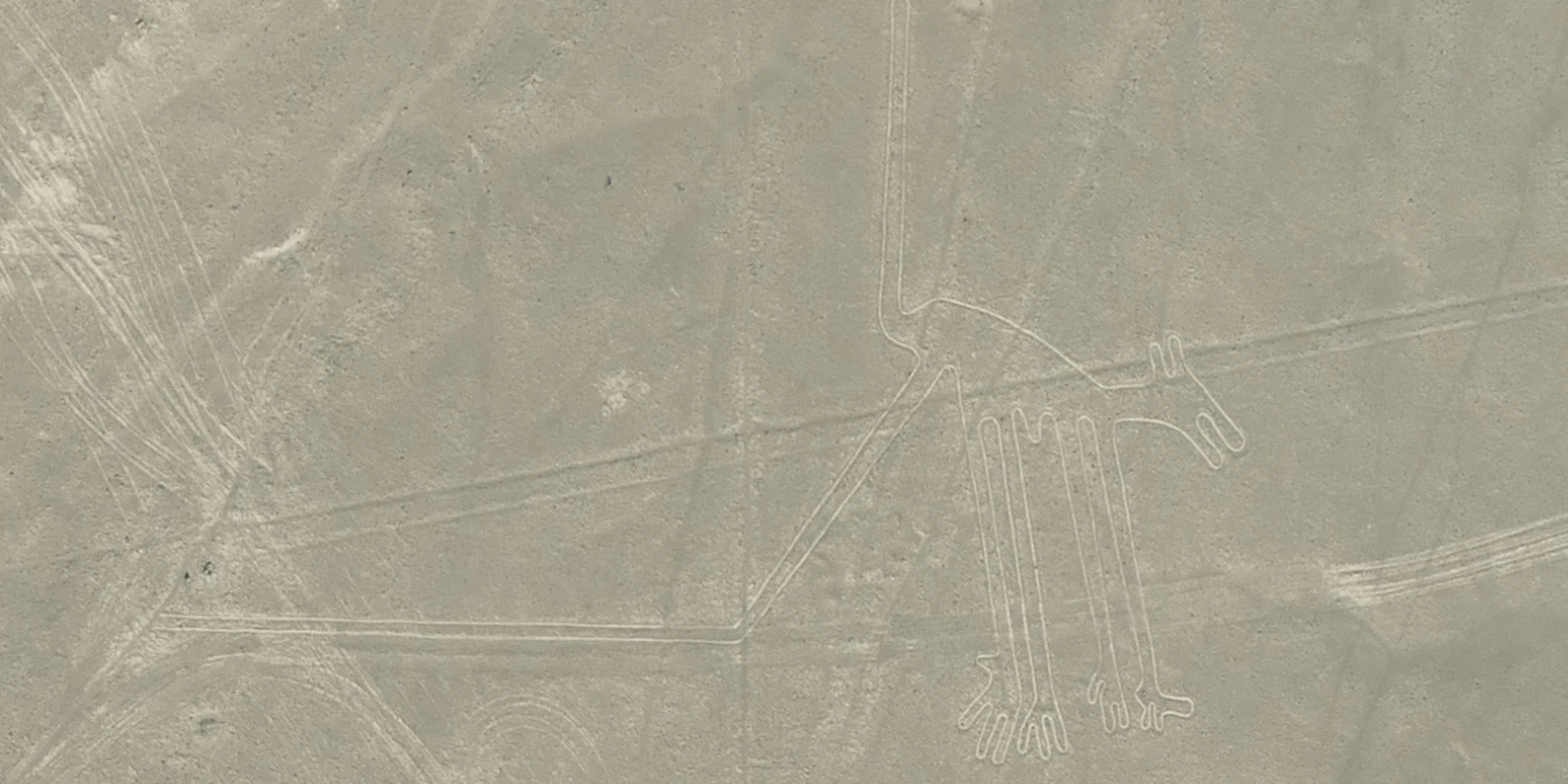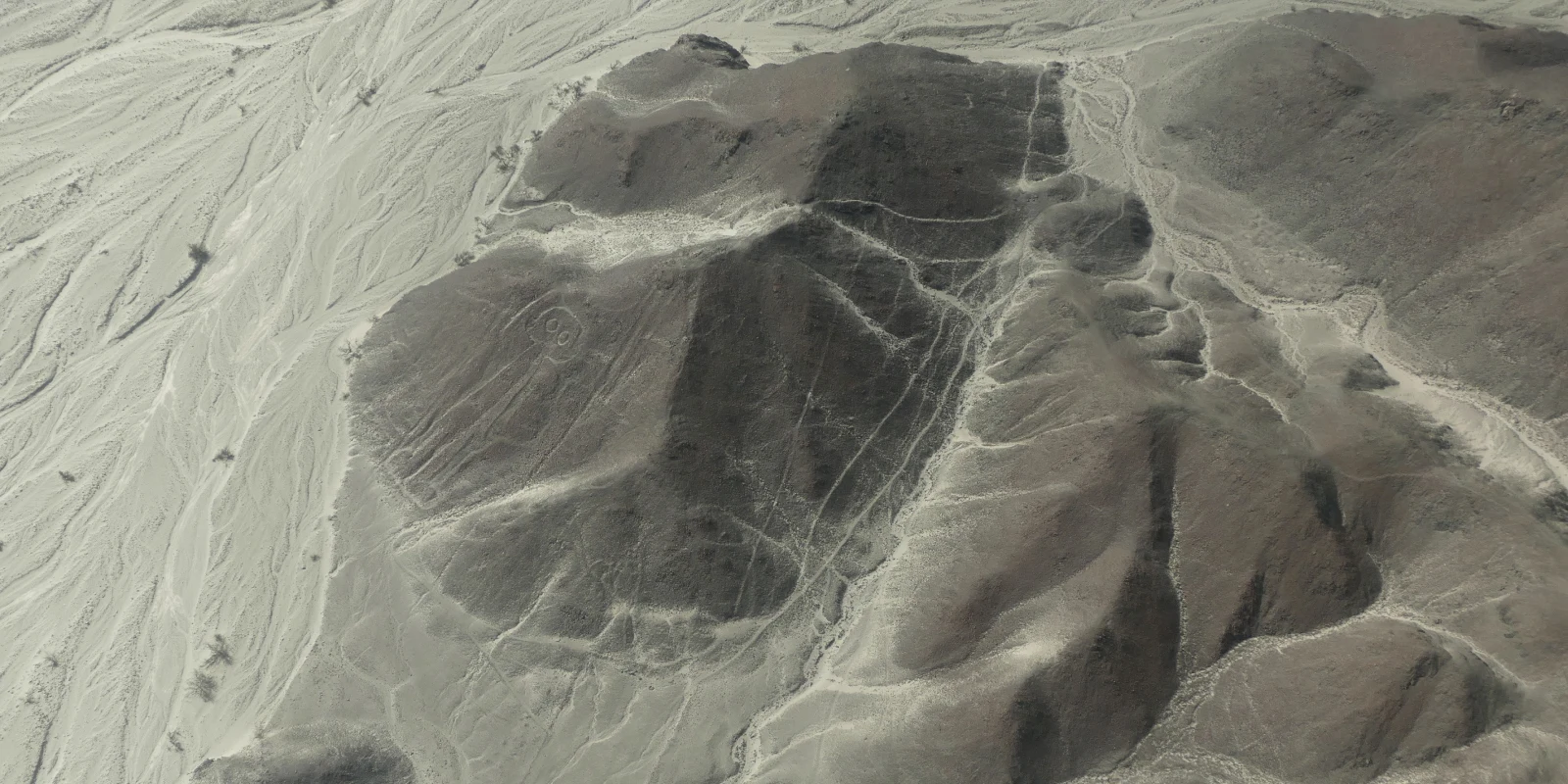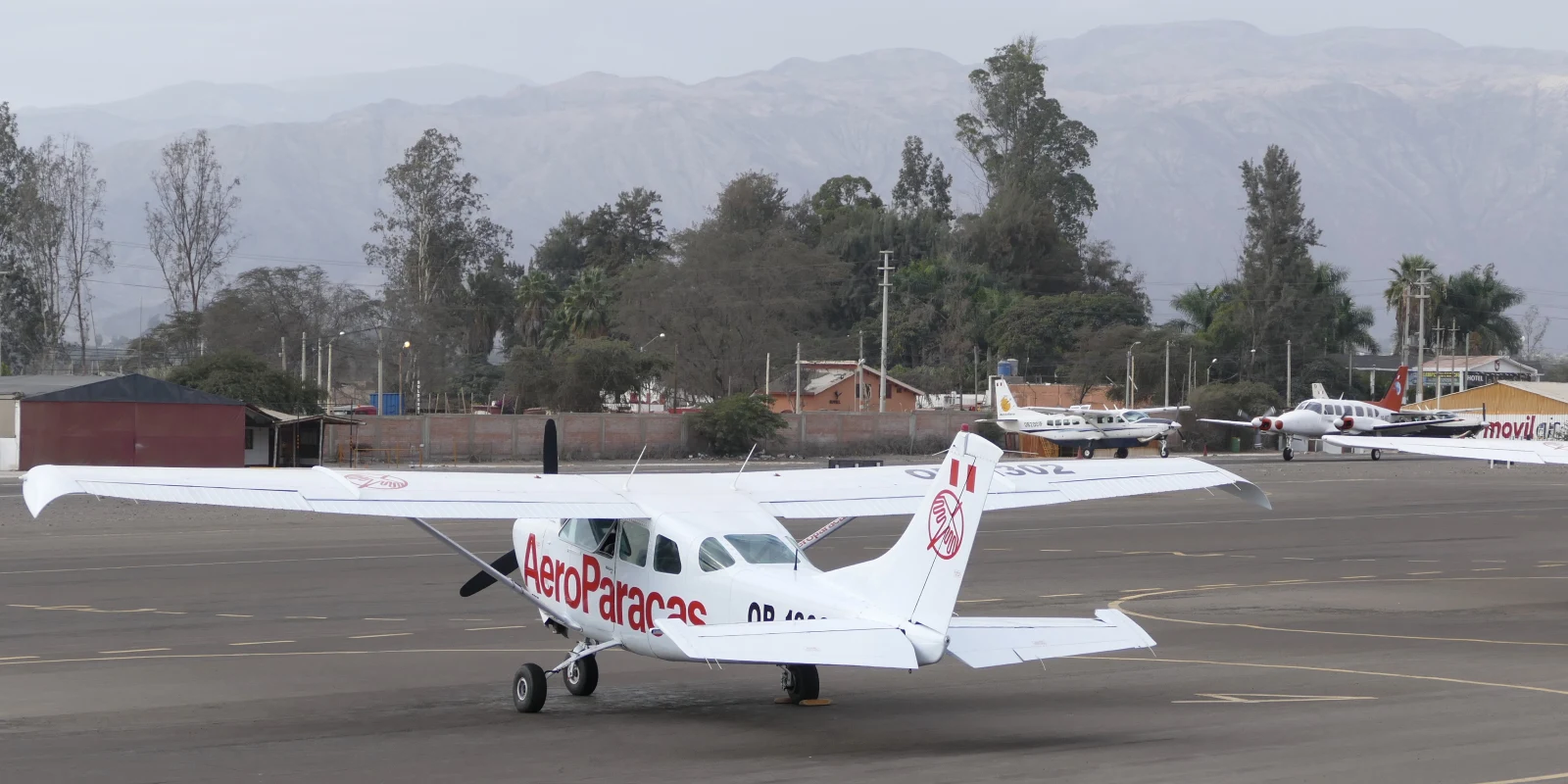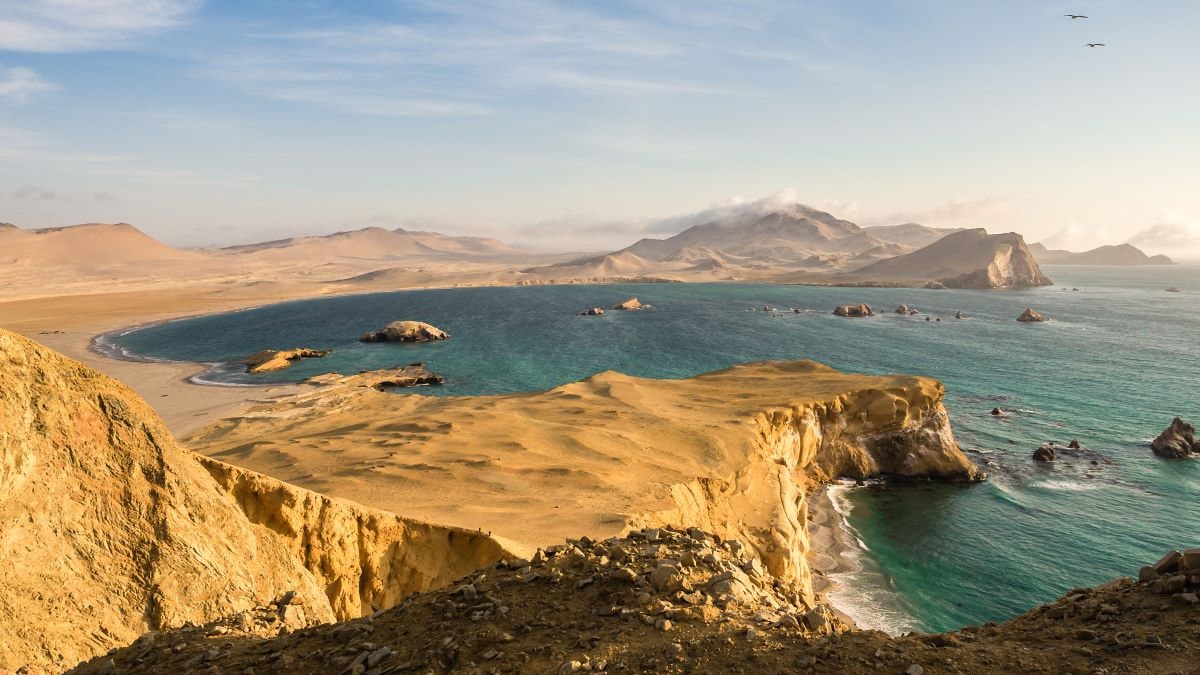Enjoy a wonderful experience with a scenic flight over the Nazca Lines in Peru. Discover the fascinating geoglyphs of this ancient world.
Visiting the famous Nazca Lines is a unique experience. To enjoy the imposing shapes that are made of a single line.
Visit Now!
Itinerary
The Nazca Lines are mysterious blows made in the sand covering a surface of 350 km, representing figures of various animals and plants such as La Araña, El Mono, El Perro, Lagartija, Colibrí, El Condor, among others in large dimensions that reach 15 to 300 meters each and with a depth of approximately 30 centimetres. the nazca lines
According to Dr. María Reiche, who dedicated a large part of her life to the study of these lines, this is the largest astronomical calendar in the world.
OUR SCHEDULES:
- Our overflights take off from 07:00 to 16:30
- Flights are made every 1:30 hr. approximately
- We fly over the Nazca Lines every day.
IMPORTANT:
The tour schedule will be confirmed at the destination. At least 2 Pax is required for this tour.
RECOMMENDATIONS
For this tour it is necessary to bring light clothing, since the city of Ica is very hot, especially if you do this tour during the summer months (December to March), where the average temperature is 35oC, during the day. lines of nazca
If you do this tour in the afternoon, it is recommended to bring a jacket, as there can be cold winds.
It is recommended to bring water, a hat, sunglasses and sunscreen.
Included
TOUR INCLUDES
- Transfer from the Hotel or Bus Station to the María Reiche aerodrome.
- Flight over the Nazca lines (30 min.)
- Informative video transmission on the Nazca Lines.
- Delivery of the overflight certificate to the Nasca lines.
- Delivery of the Nazca Lines Plan.
- Permanent assistance.
TOUR DOES NOT INCLUDE
- Air Tax.
- Other services not mentioned
CONTACTS
GENERAL CONDITIONS
- All rates are in US dollars (optional for currency exchange) and are programmed per person.
- The rates valid for Peruvians only include VAT.
- All our rates are subject to availability and changes.
- Children under 02 years and 11 months are considered INF (babies), do not pay any service and do not have the right to food, bed or seat on the tours.
- DCC (child) is considered a child from 03 to 10 years and 11 months, has a special rate and shares a room with parents.
- Children over 11 years old considered adults.
- Minors must travel with an identity document.
- Rates do not apply to holidays, Easter, long weekends, national holidays, Christmas or New Years.
More Information
Nazca
Nazca is one of the cities with the greatest cultural value in Peru. Its tourist attractions, which stand out for being ancient and mysterious, attract thousands of travelers every month from different parts of the world.
According to Dr. María Reiche, who dedicated much of her life to studying these lines, this is the largest astronomical calendar in the world.
Location:
Located about 400 kilometers from Lima, the Nazca Lines remained unknown for centuries until the beginning of aviation revealed the mysterious figures that are only visible from above.
How to Get to the Nazca Lines
Lima – Ica
By bus or car: approx. 4 hours
Ica – Nazca
By bus or car: approx. 2 to 2.5 hours
What is the Best Time to Visit the Nazca Lines?
They can be visited year-round, as Nazca has a kind of eternal summer. However, the best months are from October to March for several reasons: The weather is slightly warmer, and the skies are usually clearer.
What were the Nazca Lines, and why were they made by the ancient people of the Nazca culture?
After many studies, it has been concluded that the lines were created between 200 B.C. and 600 A.D. Researchers determined that they served as a gigantic solar and lunar calendar for the ancient Peruvian astronomers, who used them to predict the best time for harvesting and to identify the rainy season.
From the sky, figures such as the Hummingbird, the Monkey, the Dog (Chaucato), the Heron, and the Spider can be clearly seen.
What do the Nazca Lines represent?
The most representative features are the animal drawings: birds ranging from 259 to 275 meters in length (giant hummingbirds, condors, herons, cranes, pelicans, seagulls, parrots, and others), a monkey, a spider, a snail, a 27-meter-long whale, a dog with long legs and tail, an anthropomorphic figure, two llamas, and others.
The most famous and representative Nazca Lines:
The Hummingbird – According to historian María Rostworowski, the hummingbird was a tribute to a flying god revered and feared by the Nazca people. It served as an offering to prevent the deity from punishing them with droughts. This figure is the most iconic due to its harmonious proportions and the distance between its two wings, which measures approximately 66 meters.
The Monkey – According to its researcher, María Reiche, the formation of the monkey’s tail and hands is directly related to constellations and the arrival of rainy seasons, which were vital for the Nazca people. This geoglyph depicts a monkey with nine fingers and a spiral-shaped tail. Considered one of the most significant figures, it measures about 135 meters in length and is believed to represent the Big Dipper constellation.
The Spider – This Nazca Line has both astronomical and religious significance, both related to predicting rainfall. Research suggests that, due to the extreme aridity of the region, the inhabitants used this figure to avoid long periods of drought. The spider is part of a large network of lines located at the edge of a trapezoid and is one of the most notable figures thanks to the skill required to create its design. It measures approximately 46 meters in length.
The Giant Bird – This massive bird-shaped geoglyph measures 300 meters in length and 54 meters in width. One of its most distinctive features is its snake-like neck and its beak pointing directly toward the sunrise. Scholars consider it the “Announcer of Inti Raymi,” the Incan solar festival. This is because, during the mornings between June 20 and 23, if an observer stands at the head of the bird, they can see the sunset align exactly with the tip of its enormous beak. Because of this, it stands out as an ingenious work in terms of precision for marking solstices.
Other Figures – Other notable Nazca Lines include the Astronaut (a human-like figure), birds such as the frigatebird, condor, heron, crane, pelican, seagull, and parrot. Also represented are animals like the snail, whale, and dog with long legs and tail. Among reptiles are the lizard, iguana, gecko, and snake. Finally, there are also figures such as the flower and the hands.
Who discovered the Nazca Lines?
They were discovered in 1927 by the archaeologist Toribio Mejía Xesspe; however, more in-depth studies began in 1946, when the German researcher María Reiche took over. She continued this work until the end of her life.
Price
HOW MUCH?
We have price alternatives that accommodate all budgets, prices per person, expressed in US Dollars.
Make your quotes and reservations by email [email protected], you can also communicate with one of our sales executives at the telephones detailed below, we will be happy to assist you.
Phone – WhatsApp: +51 969 787 221
Phone – WhatsApp: +51 986 994 218
HOW TO BOOK THE TOUR?
To start the reservation process, please send us the following information:
- Name and surname:
- Passport number:
- Nationality:
- Date of Birth:
- Phone:
- Very important – We need the address and information about the hotel that you are staying at, in the city of Ica, to be able to pick you up at the time when the tour starts
To confirm reservations it is required to pay 50% in advance and the other 50% can be paid upon arrival at your destination.
PAYMENT METHODS
- IZIPAY
- PAYPAL
- WESTER UNION
- MONEYGRAM
- TRANSFER TO OUR BANK ACCOUNT PERU

